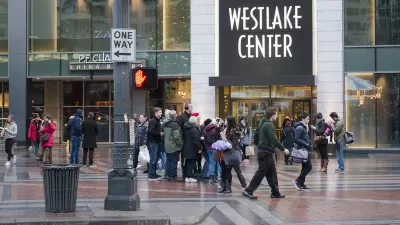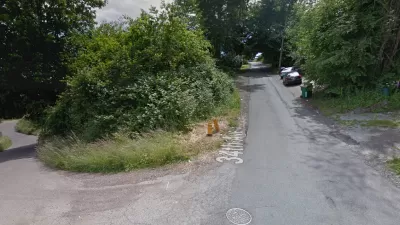The promised update for the city of Seattle's Pedestrian Master Plan was released to the public last week.

The city of Seattle recently announced a series of pedestrian safety investments, as guided by the city's updated Pedestrian Master Plan (PMP) and Vision Zero initiative.
The big ticket item of the updated PMP: $22 million in sidewalk improvements, paid for by the Move Seattle levy. According to a press release released by Mayor Ed Murray, the PMP "focuses these investments by prioritizing sidewalks that provide safer access to schools and transit options. The PMP is guided by an equity consideration, ensuring under-served communities are prioritized for pedestrian improvements."
In addition to the $22 million targeted by the city's updated Pedestrian Master Plan, the city also announced the acceleration of the second phase of the Rainier Avenue corridor safety improvements project. "Vision Zero improvements may include marked crosswalks, dedicated left turn arrows, channelization upgrades, and new signal timing to prioritize pedestrians," according to the press release from the Mayor's Office. The announcement solidifies rumblings about the future of the project from February.
For more on the update process that produced this $22 million priority on curbs around the city, see Ryan Packer calling for concrete improvements in a post from December 2016.
FULL STORY: Mayor Murray unveils updated Pedestrian Master Plan, investments improving safety in Seattle neighborhoods

Maui's Vacation Rental Debate Turns Ugly
Verbal attacks, misinformation campaigns and fistfights plague a high-stakes debate to convert thousands of vacation rentals into long-term housing.

Planetizen Federal Action Tracker
A weekly monitor of how Trump’s orders and actions are impacting planners and planning in America.

In Urban Planning, AI Prompting Could be the New Design Thinking
Creativity has long been key to great urban design. What if we see AI as our new creative partner?

Pedestrian Deaths Drop, Remain Twice as High as in 2009
Fatalities declined by 4 percent in 2024, but the U.S. is still nowhere close to ‘Vision Zero.’

King County Supportive Housing Program Offers Hope for Unhoused Residents
The county is taking a ‘Housing First’ approach that prioritizes getting people into housing, then offering wraparound supportive services.

Researchers Use AI to Get Clearer Picture of US Housing
Analysts are using artificial intelligence to supercharge their research by allowing them to comb through data faster. Though these AI tools can be error prone, they save time and housing researchers are optimistic about the future.
Urban Design for Planners 1: Software Tools
This six-course series explores essential urban design concepts using open source software and equips planners with the tools they need to participate fully in the urban design process.
Planning for Universal Design
Learn the tools for implementing Universal Design in planning regulations.
planning NEXT
Appalachian Highlands Housing Partners
Mpact (founded as Rail~Volution)
City of Camden Redevelopment Agency
City of Astoria
City of Portland
City of Laramie




























